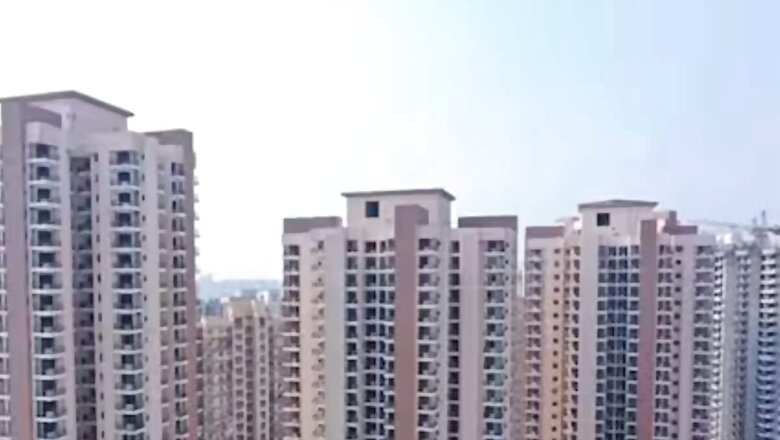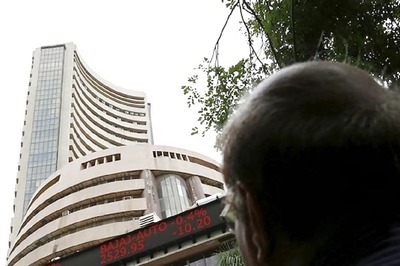
views
Written by Mohit Goel:
Faridabad has seen a remarkable transition, transforming from a quiet industrial town in the National Capital Region (NCR) into a dynamic urban centre teeming with residential and commercial possibilities. Furthermore, the development of Greater Faridabad has been a cornerstone in this transformation, playing a crucial role in reshaping the city’s landscape. With planned infrastructure improvements and strategic development initiatives, Faridabad is becoming a booming hub that is attracting new residents and businesses. The ongoing expansion of metro connectivity linking Faridabad to locations across the NCR is set to upgrade its appeal further, significantly reducing travel times and making it a significant transit point.
Several key developments have positioned Faridabad prominently on the real estate map. The expansion of Neharpar Faridabad, also known as Greater Faridabad, has opened vast new areas for development. The introduction of metro connectivity has greatly improved accessibility across the city. Additionally, the construction of a new elevated expressway along Delhi-Mathura Road has integrated Faridabad more effectively into the broader transportation network. These developments have breathed new life into Faridabad’s real estate sector, particularly focusing on affordable and premium residential segments.
Faridabad’s growth story extends beyond residential expansion. The city is also emerging as a promising commercial hub, which has increased by 8% in retail. This development is complemented by renowned educational institutions, shopping destinations, and the advent of smart homes, which draw diverse demographics to Greater Faridabad. These factors enable a transition and sustainable urban environment, positioning Faridabad as a city on the rise.
Faridabad is rapidly emerging as a key destination in the Delhi NCR region, driven by its strategic location and excellent connectivity to Delhi and Gurgaon. This growth is underpinned by a projected economic expansion rate of 8% annually and an impressive 15% increase in demand for corporate office spaces over the past year. The city is expected to see an increase of 30,000 professionals annually over the next five years, reflecting its rapid growth. Over the last five years, Faridabad has achieved an average annual GDP growth rate of 7%, with a projected increase of 8% annually by 2030. The city’s healthcare infrastructure is also undergoing transformative growth, with an anticipated 15% annual increase in the sector’s contribution to the local economy, strengthening supportive government policies. Additionally, the upcoming Jewar Airport is set to significantly increase the number of businesses, with projections indicating a traffic increase five times greater than that of IGI Airport.
Upon the completion of the Faridabad-Jewar Expressway, property values in Faridabad are anticipated to rise by as much as 40%. With many upscale sectors in Faridabad nearing full occupancy, developers are now focusing on Greater Faridabad for new luxury residential ventures.
Additionally, Faridabad’s notable advancement in the Kearney Index, which evaluates the top 20 cities in India based on various retail metrics, has been significant. In 2023, Faridabad achieved the 13th spot, substantially improving from its 2021 position. This advancement highlights the city’s growing retail strength, improved business environment, presence of leading brands, and increasing population. Such progress signals a positive shift in Faridabad’s landscape, making it an attractive location for high-end residential projects. The city’s evolving dynamics draw major brands and an increasing population, reflecting a broader transformation in its real estate market.
Faridabad is set to become a crucial transit hub, dramatically improving regional connectivity and reducing travel times. The city’s journey from an industrial outpost to a flourishing urban centre is an effective urban planning and forward-thinking strategy, promising a prosperous future for residents, businesses, and investors alike.
In the post-COVID-19 landscape, there has been a noticeable shift in consumer preferences towards luxury properties, reflecting a broader trend towards improved lifestyles in Faridabad. The future looks promising for Greater Faridabad, where expansive green spaces and upcoming transformative projects present rapid development opportunities.
The entry of international brands into Faridabad marks a significant shift from when residents had to travel to Noida or Gurugram for such experiences. Faridabad is now crafting its unique identity, combining an international ambience with the city’s distinctive charm. Real estate developers envision Faridabad as a model of sustainable urban development. Plans include enhanced waste management, increased mobility options, vertical development to optimise space, and initiatives to achieve a zero carbon footprint. These efforts are set to elevate Faridabad’s livability index and position it as a city of the future.
The upcoming real estate market is one of the most striking aspects of Faridabad’s growth story. The city’s real estate sector has witnessed a rise in demand, driven by increasing industrial development and improved infrastructure. With more people moving to Faridabad for work and lifestyle opportunities, the need for diverse housing options has grown exponentially.
As Faridabad strides confidently into the future, it will stand as an adaptive growth and progressive urban planner. With the rise of infrastructure integrating sustainable practices and a booming real estate market, Faridabad is keeping pace with its more established neighbours and setting new standards for growth in the NCR. As investors, residents, and businesses flock to grab its potential, Faridabad is carving its distinctive identity in the modern urban landscape.
(The author is managing director, Omaxe Group)


















Comments
0 comment